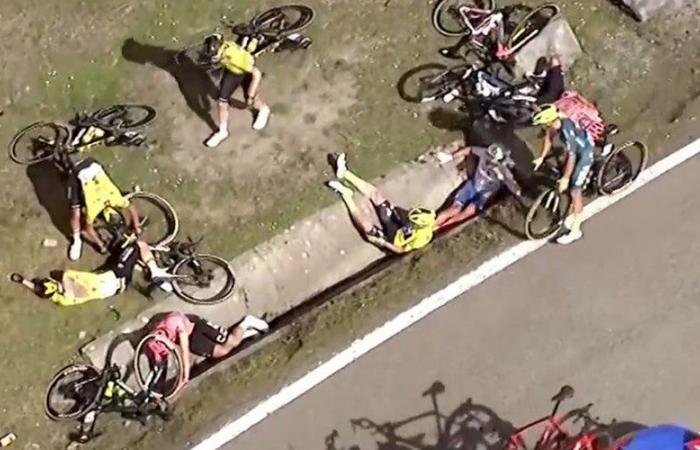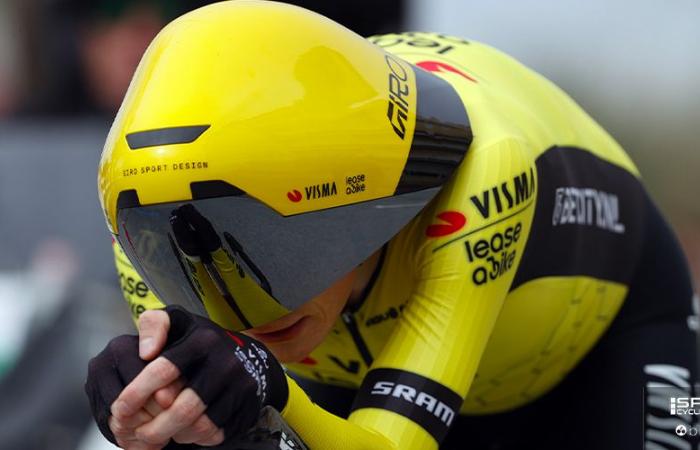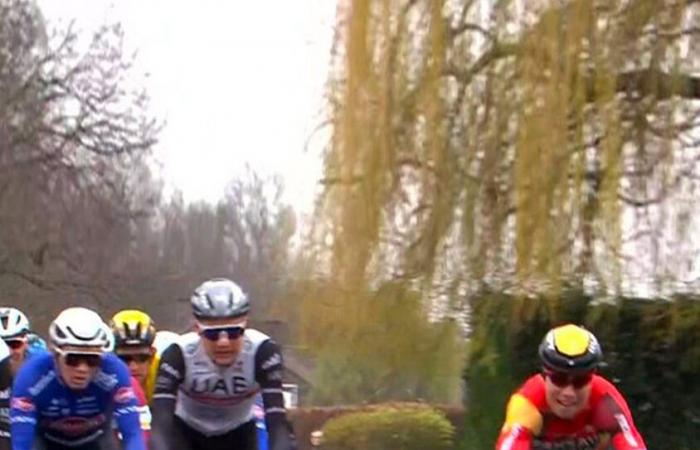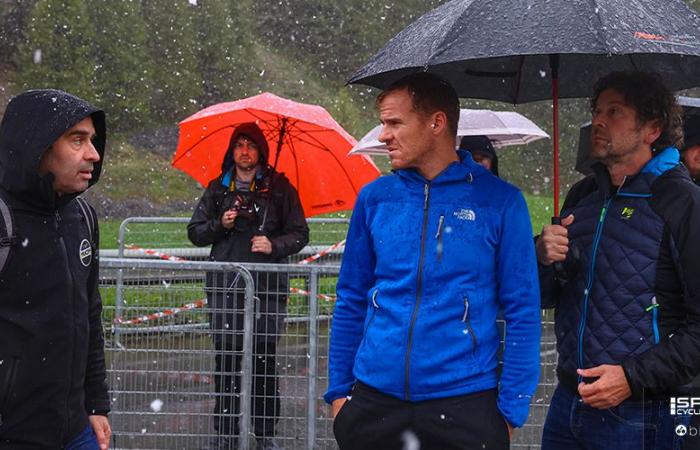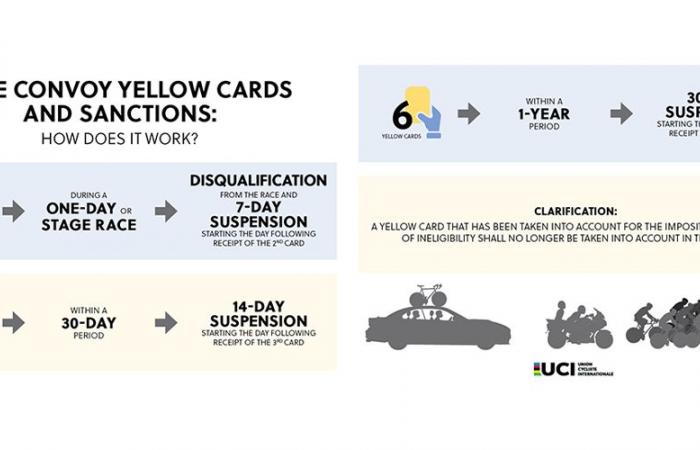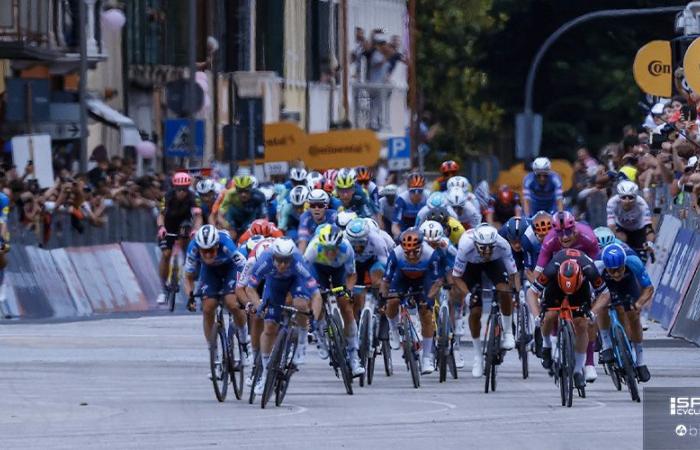After a meeting held in Aigle from 10 to 12 June, Switzerland, The UCI Management Committee has taken several decisions to strengthen rider safety in road racing (at the top is the UCI photo of the reunited group, with president Lappartient in the centre). They are based on the recommendations developed within SafeR, the new structure dedicated to safety, made up of representatives of all the components of professional cycling.
The main measures adopted are: the introduction of yellow card systemthe possible restriction ofuse of earphones in competitionsthe modification of the so-called “3 kilometer” rulethe simplification of the method calculation of gaps in the stages with a group sprint finish.
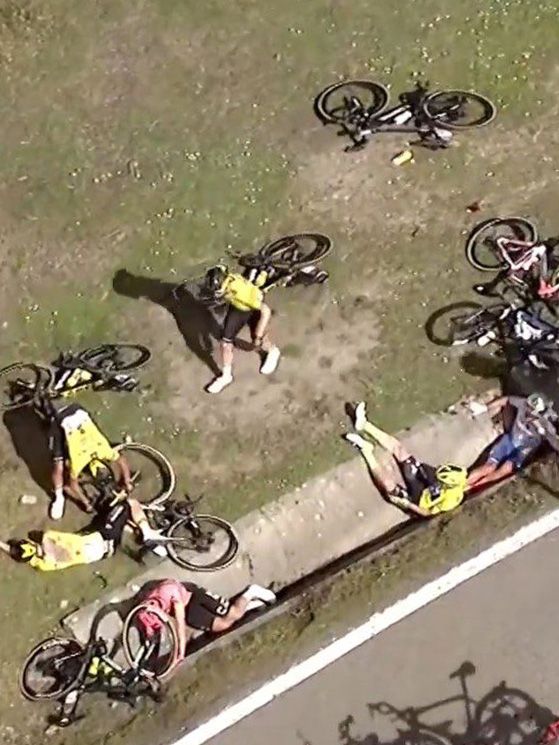

Tour 2023: SafeR is born
Let’s take a step back, at the start of the 2023 Tour in Bilbao, when SafeR (SafeRoadcycling) sees the light. Created with the contribution of the UCI, organizers, the association of men’s and women’s sports groups and associations of runners of both sexes, SafeR serves to improve the safety of men’s and women’s competitions on the UCI international calendar.
Given the increase in accidents, it was agreed on need for a more structured and systematic approach to ensuring safety. Collaboration was deemed essential to achieve this objective and enable all parties to contribute to improving the situation. It matters little that a Road Commission already exists in each national federation and that each route must be verified by the UCI before receiving approval. Since (evidently) those who were already there worked poorly or not at all, instead of replacing it, it was decided to superimpose another structure on top of it which clearly has costs.
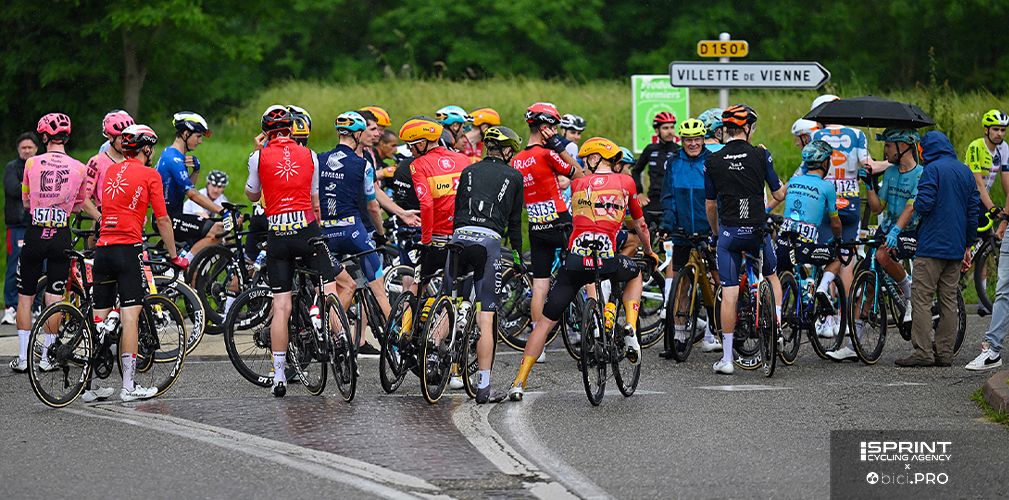

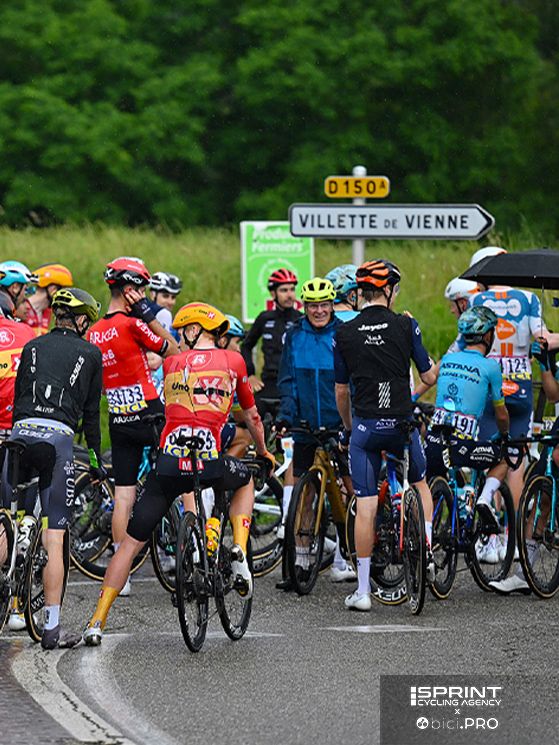

SafeR Analyst is born
Parallel to the measures mentioned above, was born the figure of SafeR Safety Analysts. They will be nominated by each of the interested parties and will have to review the safety measures implemented by the organizers, in particular regarding the problematic sections of the race routes. This will include recommendations on the necessary pathways and interventions, as well as training on best practices to be adopted. Additionally analysts will review habits and policies within teamsto ensure that they take responsibility for the safety of their athletes, both in competition and in training.
Analysts will also access the UCI’s racing accident database, for ensure a compilation of factors contributing to racing accidents and incidents. This will lead them to propose corrective measures based on objective facts and data.


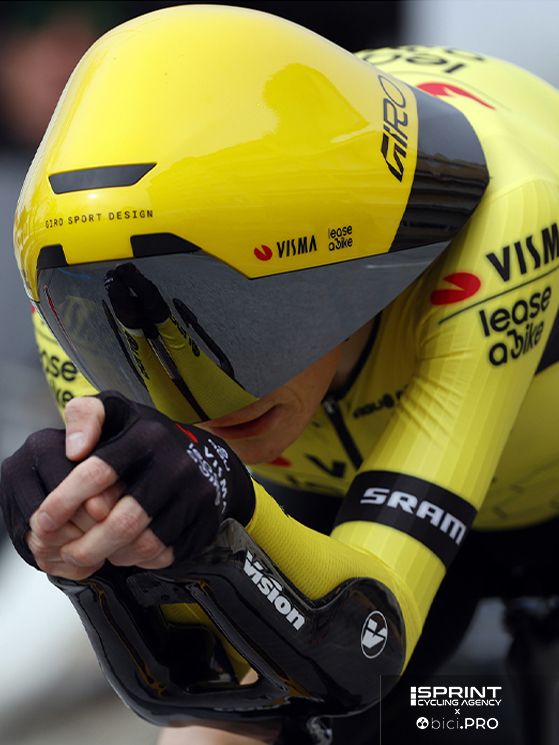

Evaluation of materials
Another case of apparent overlap: SafeR will work with partners recognized for their scientific expertise to carry out studies on various pieces of equipment. This role, as already explained in a previous article, is already played by the WFSGI, the global organization that deals with relations between UCI and companies on the subject of new materials, but the interaction is evidently considered insufficient. SafeR will work for define which measures could be useful on the materials front to reduce the risk of accidents and falls.
The results of these studies could lead to new regulations and the revision of the specifications of the equipment used in competition or to the introduction of specifications for others currently not regulated. And the strengthening of authorization procedures (for a fee) before approval of competitive use.


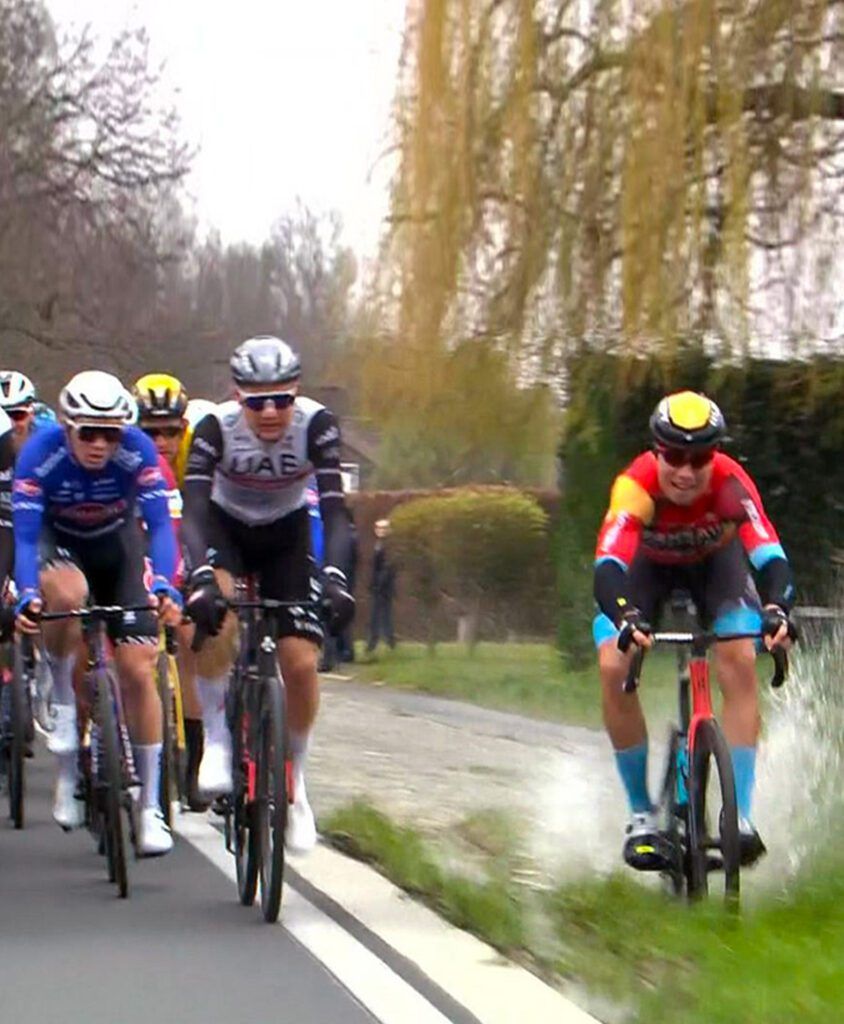

The yellow card system
It will be introduced from August 1st to December 31st a “yellow card” system in men’s and women’s professional competitions. They will represent a sanction, but they will not exist physically: they will be listed in the official press release posted after arrival.
The idea is that they generate a dissuasive effect on anyone who is part of the race convoy (runners, sports directors, doctors, other conductors and motorcyclists) and who engages in behavior that jeopardizes the safety of the event. Furthermore, the system will aim to empower the people following. It will indeed be introduced monitoring incorrect behavior over time, consequently encouraging respectful behaviour.
The case studies of dangerous behavior are already included in article 2.12.007 of the UCI Regulations (from page 104). In the future it will be possible to impose the yellow card either in addition to other sanctions or as an independent sanction. The possibility of disqualifying a rider is also already foreseen: this will remain even when the new legislation comes into force.




Effective January 1st
During the testing period, yellow cards will not lead to any sanctions, although their… distribution will equally highlight the habits of the subjects who received them. Already existing sanctions will continue to apply throughout 2024, including fines, deductions of UCI points, relegations and disqualifications. At the end of the 2024 season, SafeR will carry out a full evaluation of the yellow card system before presenting it to the Professional Cycling Council and then to the UCI Management Committee.
From January 1st, the system will be extended to UCI ProSeries events, Olympics, UCI world championships and continental championships. The UCI will maintain a database of yellow cards issued: their accumulation in a defined period will result in the sanctions indicated in the table below.
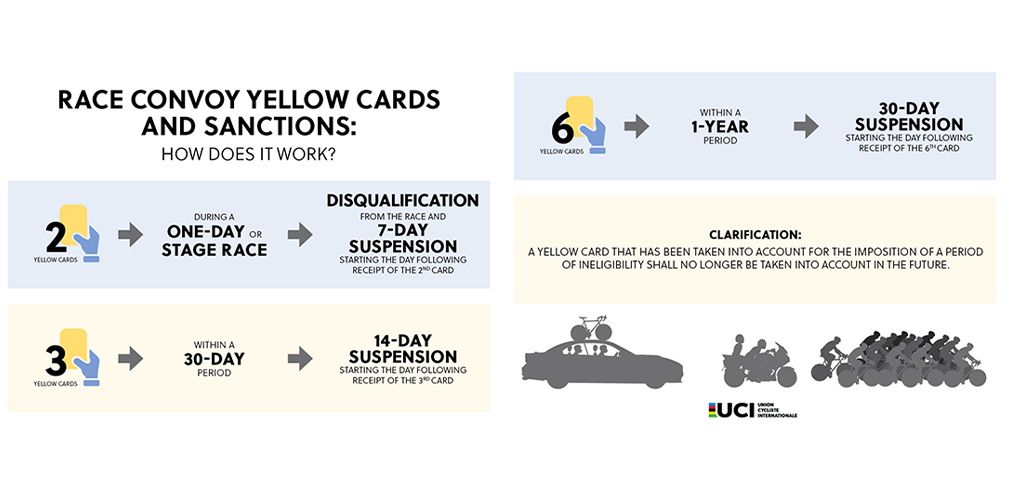

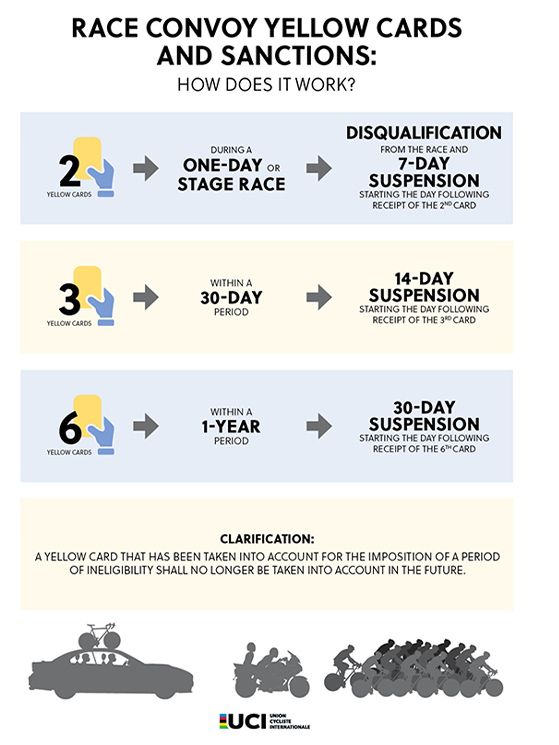

Earphones in the race
There is also talk of safety in the decision made regarding the use of earphones in the race, given that according to many some falls are caused by the inability to concentrate due to constant communications.
The UCI decided to test the effects of a restriction of their use in some one-day races and stages yet to be defined. In addition to being a cause of distraction, SafeR focused on the risk posed byobject placed on the back in the event of a fall and on the consequences of the constant calls from all teams for their men to push themselves to the front of the race.
The reports of the parties involved will be collected and analyzed to study the effects of this limitation, also evaluating intermediate measures, such as the limitation of their use to two riders per team or the placement of the radio itself under the saddle (where the transponder is already placed).
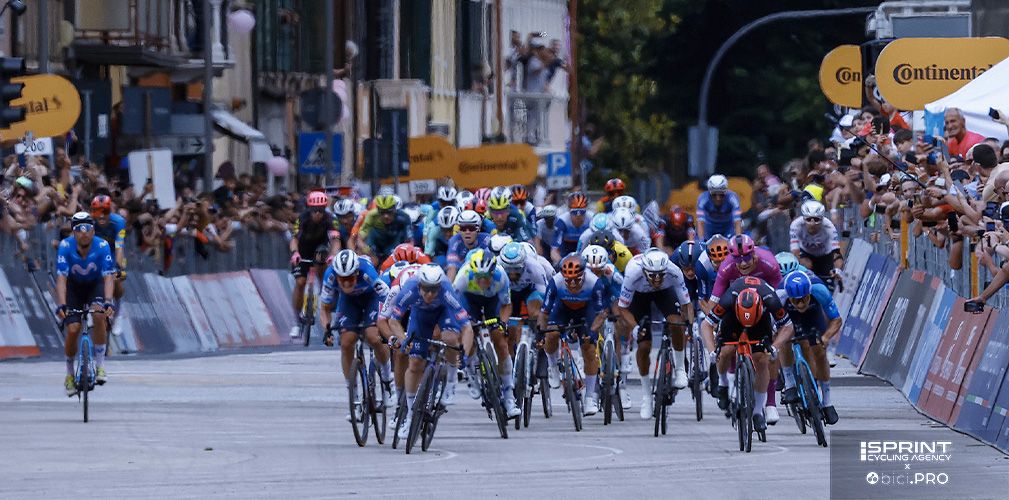



Flights and gaps
Finally, among the new security measures there is the one linked to the so-called “3 kilometer” rule in case of group arrival and others calculation of gaps in compact group arrivals.
The three kilometer rule was introduced in 2005 and seemed like a salvation compared to when the neutralization of the finals occurred only in the last kilometre. It provides that in the event of a fall, mechanical problem or puncture in the last three kilometres, the runner will be classified with the time of the group in which he was at the time of the accident. The innovation provides that in case of necessity due to particular environmental conditions, by agreeing on the variation before the start of the race, this distance can be brought up to 5 kilometres. In theory this will reduce the pressure on the runners in the stages leading up to the sprint.
For the same reason, the method of calculating gaps in group arrivals could change. The current rule, passed in 2018, requires runners to come all classified with the same time, unless there is a gap of more than one second between two athletes. In this case, the riders behind the second rider will be classified with that delay. For exceptional cases and at the request of the organizer, it was however possible to increase that gap to 3 seconds. SafeR has asked to increase this gap (3 seconds) for all group arrivals. In this way, during the same sprint, runners who are not involved in it will not be forced to remain glued to the wheel in front of them, reducing risk factors.

